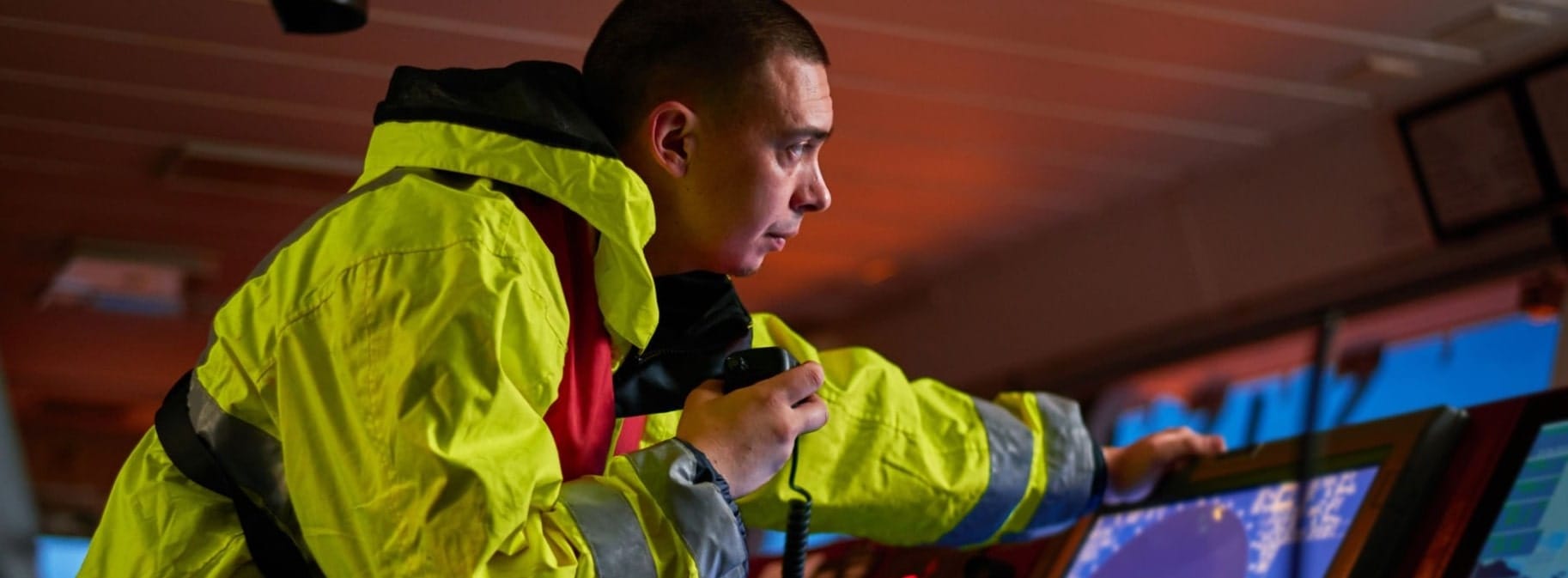Marine Radio and Safety
Marine Radio and Safety: The Lifeline You Should Never Overlook
Emergencies on the water are unpredictable. A fire, collision, capsizing, or sudden medical crisis can escalate quickly, leaving little time to react. In these critical moments, a marine VHF radio is your direct link to safety. Understanding how to properly use and set up your VHF radio could make the difference between a successful rescue and a tragic outcome.

Why Marine VHF Radios Are Essential for Safety
Unlike cell phones, which rely on terrestrial towers and often lose signal over open water, VHF radios operate on specific channels monitored 24/7 by the Coast Guard, marinas, and other vessels. This ensures a boater in distress can call for help and be heard clearly over long distances.
VHF radios provide:
- Immediate Access to Rescuers: VHF radios connect you directly to emergency services like the Coast Guard and nearby vessels.
- Coverage Across Vast Waterways: VHF radios offer communication reliability even in remote areas where cell service fails.
- Emergency Communication: Channel 16 serves as the international distress frequency, ensuring priority responses to distress calls.
Modern advancements, such as Digital Selective Calling (DSC) and the Rescue 21 System (provided by the U.S. Coast Guard), allow distress calls to include location data, significantly improving search and rescue efforts.
How Digital Selective Calling (DSC) Enhances Safety
Digital Selective Calling (DSC) is a safety-enhancing feature integrated into modern VHF radios. It allows boaters to send automated distress messages with a single button press. A DSC distress call transmits:
- Your vessel’s identity via your Maritime Mobile Service Identity (MMSI).
- Your current location if connected to a GPS.
This digital signal alerts the Coast Guard and all nearby DSC-enabled vessels. Rescuers can quickly determine your exact location, speeding up the response time. Learn more about DSC technology.
The Importance of Rescue 21 Technology
The Rescue 21 System is an advanced communications network developed by the U.S. Coast Guard. It integrates with DSC-enabled radios, providing coverage for over 95,000 miles of coastline and navigable waterways in the U.S. Key benefits include:
- Location Pinpointing: Advanced direction-finding technology pinpoints the origin of radio signals.
- Efficient Coordination: Rescue 21 improves coordination between responders, reducing search time and maximizing resource efficiency.
Read more about Rescue 21 on the official U.S. Coast Guard site.
Despite these life-saving advancements, the Coast Guard faces a major issue: most distress calls lack essential information.
Approximately 90% of DSC alerts lack position data because the radio isn’t connected to a GPS, and 60% have unregistered MMSI numbers. This hinders rescuers’ ability to respond effectively.
For boaters, this means that even with a DSC-enabled VHF radio, failing to complete its setup can render its safety features useless.
Marine radio and safety: two Critical Steps
1. Obtain and Register Your MMSI Number
A Maritime Mobile Service Identity (MMSI) number uniquely identifies your vessel and enables DSC functionality. Without it, rescuers cannot identify you or access emergency contact details.
To get an MMSI number, visit these providers:
Once you’ve obtained your MMSI, program it into your radio. Be sure to update your registration if your emergency contacts or boat information changes.
2. Connect Your VHF Radio to a GPS Receiver
For DSC distress calls to transmit your location, your VHF radio must be connected to a GPS. Some radios have built-in GPS, while others require an external connection.
Steps to connect GPS:
- Use the NMEA 0183 interface (standard on most DSC radios) to connect the GPS to your radio.
- Refer to your user manuals for step-by-step instructions.
Once connected, verify that your GPS coordinates appear on the radio’s display.
Best Practices for Using Your VHF Radio in Emergencies
- Always Monitor Channel 16: Channel 16 is reserved for emergencies and hailing. Keep it monitored when underway.
- Follow the Mayday Protocol:
- Say “Mayday” three times.
- Identify your vessel by name.
- Provide your location and nature of distress.
- Repeat until you receive a response.
- Test Your Setup: Regularly test your radio to ensure DSC and GPS features are functioning correctly.
- Use Low Power for Routine Calls: Save high-power settings for emergencies and long-range communications.
For more information on VHF protocols, visit the National Weather Service Marine Guide.
Troubleshooting Common VHF Radio Issues
Even well-maintained VHF radios can encounter problems. Here’s how to address common issues:
- No Power: Check wiring, fuses, and battery levels. Replace components if needed.
- Poor Reception: Ensure the antenna is securely connected and free of corrosion. Reposition it for better line-of-sight coverage.
- Interference: Ground the radio properly and minimize proximity to electronic devices.
- GPS Not Displaying: Verify the NMEA connection between your GPS and VHF radio. Check for firmware updates.
Final Thoughts
A marine VHF radio is more than just a communication tool—it’s a lifeline that connects you to help when it matters most. Proper setup, including registering your MMSI number and connecting to GPS, ensures that your radio is ready for emergencies.
The Coast Guard and other responders rely on accurate information to carry out rescues quickly and efficiently. By taking a few simple steps to enable the full functionality of your VHF radio, you’re not just protecting yourself but also helping rescuers help you.
Stay safe on the water by setting up your VHF radio properly and ensuring it’s ready to work when you need it most. For further guidance, check out U.S. Coast Guard Boating Safety Resources.